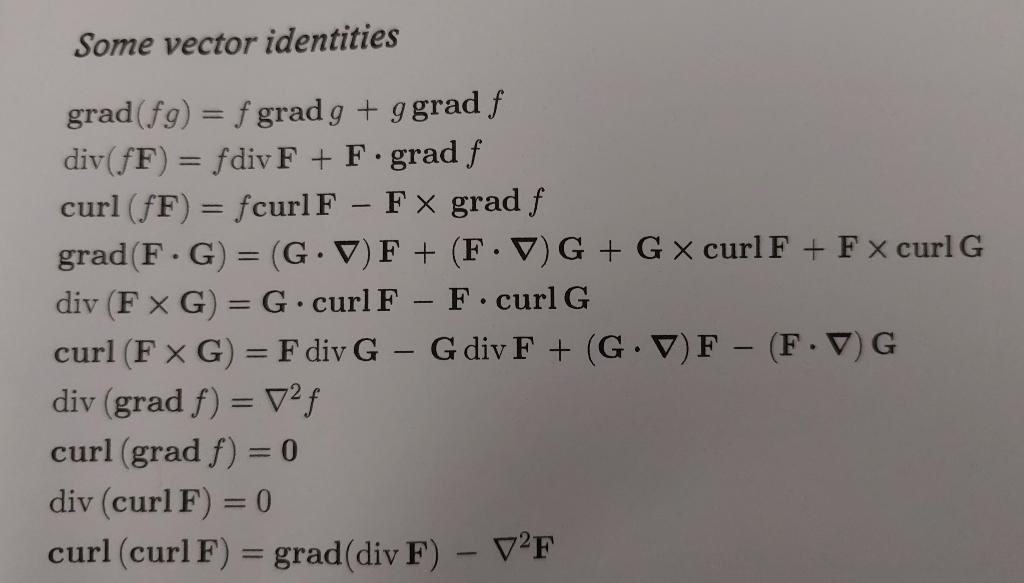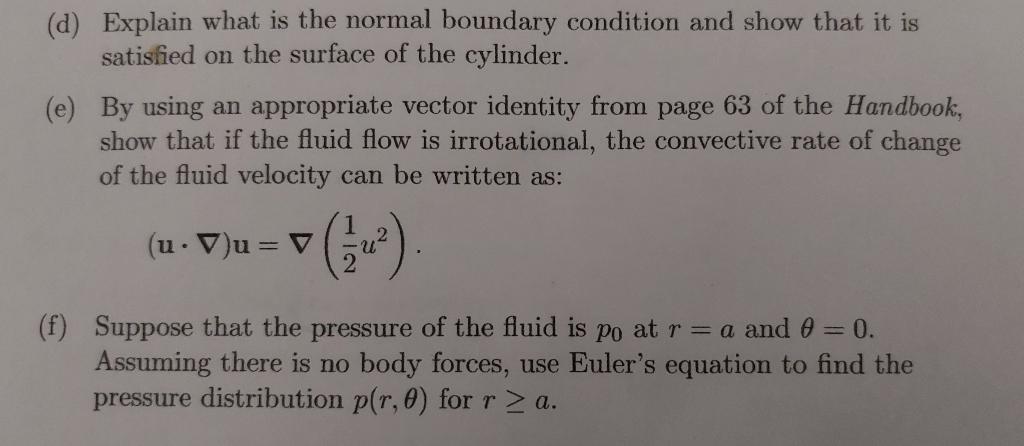Home /
Expert Answers /
Advanced Math /
please-solve-part-d-e-anf-f-especially-e-anf-f-and-properly-comment-on-the-solutions-pa809
(Solved): Please solve part d, e anf f (especially e anf f) and properly comment on the solutions. ...
Please solve part d, e anf f (especially e anf f) and properly comment on the solutions.

Consider an inviscid fluid of density \( \rho_{0} \) flowing past the cross-section of a solid cylinder of radius \( a \). The stream function in polar coordinates \( (r, \theta, z) \) is given by: \[ \psi=U \sin \theta\left(r-\frac{a^{2}}{r}\right) \] where \( r \geq a \) and \( U \) is a positive constant.
(d) Explain what is the normal boundary condition and show that it is satisfied on the surface of the cylinder. (e) By using an appropriate vector identity from page 63 of the Handbook, show that if the fluid flow is irrotational, the convective rate of change of the fluid velocity can be written as: \[ (\mathbf{u} \cdot \boldsymbol{\nabla}) \mathbf{u}=\boldsymbol{\nabla}\left(\frac{1}{2} u^{2}\right) \] (f) Suppose that the pressure of the fluid is \( p_{0} \) at \( r=a \) and \( \theta=0 \). Assuming there is no body forces, use Euler's equation to find the pressure distribution \( p(r, \theta) \) for \( r \geq a \).
Some vector identities \( \operatorname{grad}(f g)=f \operatorname{grad} g+g \operatorname{grad} f \) \( \operatorname{div}(f \mathbf{F})=f \operatorname{div} \mathbf{F}+\mathbf{F} \cdot \operatorname{grad} f \) \( \operatorname{curl}(f \mathbf{F})=f \operatorname{curl} \mathbf{F}-\mathbf{F} \times \operatorname{grad} f \) \( \operatorname{grad}(\mathbf{F} \cdot \mathbf{G})=(\mathbf{G} \cdot \boldsymbol{\nabla}) \mathbf{F}+(\mathbf{F} \cdot \nabla) \mathbf{G}+\mathbf{G} \times \operatorname{curl} \mathbf{F}+\mathbf{F} \times \operatorname{curl} \mathbf{G} \) \( \operatorname{div}(\mathbf{F} \times \mathbf{G})=\mathbf{G} \cdot \operatorname{curl} \mathbf{F}-\mathbf{F} \cdot \operatorname{curl} \mathbf{G} \) \( \operatorname{curl}(\mathbf{F} \times \mathbf{G})=\mathbf{F} \operatorname{div} \mathbf{G}-\mathbf{G} \operatorname{div} \mathbf{F}+(\mathbf{G} \cdot \nabla) \mathbf{F}-(\mathbf{F} \cdot \boldsymbol{\nabla}) \mathbf{G} \) \( \operatorname{div}(\operatorname{grad} f)=\nabla^{2} f \) \( \operatorname{curl}(\operatorname{grad} f)=\mathbf{0} \) \( \operatorname{div}(\operatorname{curl} \mathbf{F})=0 \) \( \operatorname{curl}(\operatorname{curl} \mathbf{F})=\operatorname{grad}(\operatorname{div} \mathbf{F})-\nabla^{2} \mathbf{F} \)
Expert Answer
(d) The normal boundary condition for a fluid flow around a solid object states that the normal component of the velocity of the fluid at the surface

